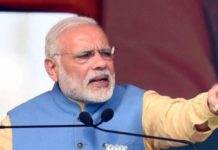ES. At the onset, please accept our congratulations for becoming the 1st woman President of IEIA. What are your thoughts at this moment and what key priorities have you set for yourself for the coming one year?
Sonia Prashar. Thank you very much. I am honoured and humbled to take over the presidency of IEIA, the most important and apex association for the Exhibition Industry in India. At IEIA, we will continue to progress with our vision, together with the industry, establishing vital goals, which will be woven in the narrative of the Indian Exhibition Industry. Three immediate key vision points from my side would be:
SKILLING & UPSKILLING:
- Training for the on-ground workforce to meet the Industry standards we are aiming and aspiring for, this is where we can make a difference and an impact through skilling.
- The development of Exhibition Professionals through trainings and workshops has to be continued as another important part of our agenda on upskilling.
INDIA NARRATIVE AS AN EXHIBITION DESTINATION:
Promote India as an attractive “exhibition destination” while showcasing world class exhibition venues available today with impressive expansion plans, highlighting new infrastructure projects in pipeline and the multiple growth sectors in India, thereby enhancing the scope of our offerings through new ideas plus innovations.
ADVOCACY:
Continue our ongoing efforts of presenting the cause and relevance of the Exhibition Industry to relevant government authorities and stakeholders by articulating strongly our position and highlighting the immense contribution of exhibitions industry towards the economy and job creation. This becomes even more pertinent in the economic revival post-covid era to come.
ES. With exhibitions coming to a halt due to the pandemic, there is a question mark on the future of exhibitions. Many people have doubts on the revival of this industry and believe that virtual will replace physical. What is your opinion in this regard and do you feel that the physical exhibitions will be back?
Sonia Prashar. The last fifteen months of the pandemic have given us an opportunity, to our industry, to internally assess our strengths and weaknesses, enhance our digital infrastructure, build agile teams and offer innovative solutions. This phase has in fact, inspired the industry to introspect and enhance the scope of their offerings to cater to the new age customer. Data analytics, automation of processes, improved interfaces are just some of the elements which have been worked upon. And in the midst of this all, it is the continued support from each stakeholder, which has been extremely encouraging.
The power of face-to-face networking is here to stay, and this was strongly reaffirmed by the response generated by the few physical events which took place in the interim. Physical exhibitions will absolutely be back, nationwide vaccination drives are in full swing, besides the medical fraternity is developing several alternative solutions and many countries around the world are already getting back to pre-covid times of living but with precautions in place. Dubai has successfully staged some events, Germany is also in the midst of preparing for events starting September, as also USA where events are being held with the necessary precautions. Communities will now be interacting via hybrid formats with a greater integration of virtual and face to face events. Live exhibitions have been and continue to remain the most successful and effective tools to creatively match the needs of an exhibitor and a visitor.

ES. India has often been called as a sleeping elephant in the global exhibition industry. China on the other hand, has been the raging lion. Do you feel that India can shine on the global exhibition radar? Please throw some light on the MICE (exhibition) infrastructure available in India to hold world class shows.
Sonia Prashar. I would say India has been slowly and gradually building the exhibition industry and network, in complete alignment with the industries we serve. Every country has a different ecosystem and mandate and therefore it is perhaps its complex to compare. Presently we have 25 purpose built venues in the country for hosting exhibitions with a total indoor capacity of 4,37,000 sqm. Additionally approx 2,00,000 sq mtrs is being planned through expansions and new venues in next 2 years. While venues such as IEML (Greater Noida, NCR), BIEC (Bengaluru), Pragati Maidan (New Delhi), HITEX (Hyderabad) and BEC (Mumbai) are enhancing their capacities and infrastructure, new venues such as Reliance Jio Centre (Mumbai) and India International Convention & Expo Centre (IICC) (Dwarka) will offer state of the art solutions and will add to our growing venue capacities. India still has a lot of untapped potential, and personally I have always believed in the age old adage, that slow and steady wins the race. In view of current scenario, I would perhaps recoin the same to say steady and consistent wins the race.
ES. With over 25 years of experience in senior management roles, please tell our readers about your exciting professional journey.
Sonia Prashar. The journey has been remarkable and extremely rewarding. The milestones range from my first standalone event to managing a portfolio of 20+ events, the possibility to bring newer shows to the Indian market and creating forums which have succeeded in supplementing the industries we serve, perfectly. Presently I am thoroughly enjoying my stint as the President of IEIA, connecting and collaborating with the whole exhibition ecosystem. In all of this, my most valuable asset has been the network I have created and the various inspiring mentors I have interacted with during the course of this journey.
ES. With the challenge of juggling multiple leadership roles and donning various hats, with each role, comes different responsibilities. How do you ensure commitment & excellence in each one of them?
Sonia Prashar. So long as you enjoy every role and do it with all sincerity, the process becomes extremely rewarding. I love the exchange of ideas and the opportunity to connect with different personalities, there is always much to learn. The key is to empower a team which drives the organisation for you, act as a friend, guide and advisor to them and allow them to take forward the vision of the company.
ES. Taking a cue from the question above, please tell us how do you manage your human resources and lead them to stay relevant & inspired, even amidst such troubled times?
Sonia Prashar. Tough times don’t last, tough people do. So, the essential thing to do as a leader is to keep your team busy, motivated and inspired and at the same time communicate with them, hear them out and lend a sense of empathy. The current circumstances were not envisaged by anyone; therefore, it becomes even more crucial that we let the power of humanity win amidst these times, be there for each other. We have used the past year to further skill and upskill our team and give them tools which will be useful once business resumes fully.
ES. How have you geared up NMIND in these times to take on the challenges in the ‘new normal’? Have the processes and outlook undergone a change since the pandemic?
Sonia Prashar. Digital transformation, further refinement of processes, creating new frameworks and offerings and also creating programs to support the industry in general are some of the steps which were taken in the past year. The time was well utilised to enhance our structures and processes.
ES. What is your vision for Indo-German Chamber of Commerce? How many German companies are active in India and what are the major sectors they serve?
Sonia Prashar. German companies are positive about the future outlook of India and plan to strengthen their presence here. Their plans are in line with the role they envisage India to play in their global strategy. Indo-German Chamber of Commerce has been strongly supporting these companies for more than six decades now by playing the role of a facilitator. Spread across India with offices in New Delhi, Mumbai, Bengaluru, Chennai, Kolkata, Pune and a liaison office in Düsseldorf, the Chamber completed 65 years of inception in 2021 and has a promising journey ahead.
For German investments, Maharashtra is the most preferred destination. Karnataka, New Delhi and Tamil Nadu follow. In terms of sectors manufacturing, electronics, automotive, chemicals, R & D, IT and Services are the leading ones. India offers German companies a conducive business atmosphere and a highly qualified workforce. We have close to 1800 German companies represented in the Indian marketplace amongst which are several hidden champions, besides the market captains. This is also the year when India and Germany mark 70 years of establishing diplomatic relations. India was one of the first states to recognise the Federal Republic of Germany diplomatically after the Second World War. Since then, what followed was years of successful cooperation.
ES. Can you throw some light on the recently published German Indian Business Outlook 2021? What was the survey and some of its major findings?
Sonia Prashar. India remains an attractive investment destination, the potential the country has to offer is huge and not yet fully explored. Rising incomes, favourable growth patterns and overall ease in doing business are being seen as some of the factors which will drive growth. Respondents to the survey were especially positive about the recovery of the economy at a faster pace, reliability of their business partners in India as also the ongoing development of infrastructure. India and Germany have been working very successfully in the topic of skilling and there is still much to do. German companies see a huge internal demand for their products and services, owing to a very strong young demographic in India.
ES. There are exhibitions that have existed over a hundred years, which have witnessed wars, epidemics, dot com and global recession and still continue to hold dominance. How resilient do you feel is our industry in context to the present situation of Covid-19 pandemic?
Sonia Prashar. Our Industry is an epitome of resilience and will continue to withstand the winds of change. The resilience in fact has been developed through decades of enduring the above-mentioned challenges. But what makes the industry sustain and survive is the need for human connection. The future will be hybrid, integration of digital elements but with a strong human centred approach. The consumers today are a lot more aware and technologically savvy; they want more catered solutions, better ROI and look at positioning their offerings in more unique ways.

ES. What are the areas which will see drastic changes? What would be top 3 Tech Trends of MICE industry in the next one year?
Sonia Prashar. The top 3 trends I can predict at this stage is that there will be many mergers and partnerships being formed in the next few years and we will witness the emergence of stronger entities, digitalisation will drive our processes and growth, putting the exhibition Industry on par with other developing Industries, data, analytics, newer smarter technology will become more integrated into our day-to-day style of working. Lastly a more customer centric approach will mark a key shift in the way the industry has operated in the past, by applying new methodologies such as design thinking, there will be an attempt to create solutions which are rooted in empathy and understanding the demands of the exhibitors and visitors better.
ES. What are some of the digital / technological aspects that have impressed you over the last one year? What would be your message to the industry at this time?
Sonia Prashar. I think, the fact that we managed to stay connected with our exhibitors and visitors by harnessing the power of technology, is a big achievement be it through webinars or virtual events or social media. The connection in fact has improved and turned into a continuous engagement instead of being centred around the show. I would urge all stakeholders to remain hopeful and positive, as tides always turn and we will come our stronger than ever. Use the time to develop new solutions and enhance the scope of the Industry.















